11.1 直接寻址表
11.1-1
findmax(T,m)
{
max=T[0];
for i=1 to m-1
{
if T[i]!=NIL && T[i]>max
max=T[i]
}
return max
}11.1-2
如果位向量的第k位有元素则设为1,否则设为0
11.1-3
用链表解决碰撞问题
11.1-4
We denote the huge array by T and, taking the hint from the book, we also have a
stack implemented by an array S . The size of S equals the number of keys actually
stored, so that S should be allocated at the dictionary’s maximum size. The stack
has an attribute S: top, so that only entries S[1.. S.top] are valid.
The idea of this scheme is that entries of T and S validate each other. If key k is
actually stored in T , then T[k] contains the index, say j , of a valid entry in S , and
S[j] contains the value k. Let us call this situation, in which 1 ≤ T[k] ≤ S.top,
S[T[k]] = k, and T[S[j]] = j , a validating cycle.
Assuming that we also need to store pointers to objects in our direct-address table,
we can store them in an array that is parallel to either T or S . Since S is smaller
than T , we’ll use an array S', allocated to be the same size as S , for these pointers.
Thus, if the dictionary contains an object x with key k, then there is a validating
cycle and S[T[k]] points to x .
The operations on the dictionary work as follows:
- Initialization: Simply set S.top = 0, so that there are no valid entries in the stack.
- SEARCH: Given key k, we check whether we have a validating cycle, i.e., whether 1 ≤ T[k] ≤ S.top and S[T[k]] = k. If so, we return S'[T[k]], and otherwise we return NIL
- INSERT: To insert object x with key k, assuming that this object is not already in the dictionary, we increment S.top, set S[S.top] = k, set S'[S.top] = x , and set T[k] = S.top.
- DELETE: To delete object x with key k, assuming that this object is in the dictionary, we need to break the validating cycle. The trick is to also ensure that we don’t leave a “hole” in the stack, and we solve this problem by moving the top entry of the stack into the position that we are vacating—and then fixing up that entry’s validating cycle. That is, we execute the following sequence of assignments:
S[T[k]]←S[top[S]]
T[S[T[k]]]←T[k]
S'[T[k]] ← S'[top[S]]
T[k]←0
top[S]←top[S]−1
Each of these operations---initialization, SEARCH, INSERT, and DELETE---takes
O(1)time.
实现:http://blog.csdn.net/mishifangxiangdefeng/article/details/7709567
11.2 散列表
11.2-1
11.2-3
成功查找:Θ(1 + α) The element we search for is equally likely to be any of the elements in the hash table.
不成功查找:1/2 of the original running time, but still Θ(1 + α), if we simply assume that the probability thatone element's value falls between two consecutive elements in the hash slot is uniformly distributed.
This is because the value of the element we search for is equally likely to fall between any consecutive elements in the hash slot, and oncewe find a larger value, we can stop searching. Thus, the running time for unsuccessful searches is a half of the originalrunning time.
插入:Θ(1 + α), compared to the original running time of Θ(1 ).
This is because we need to find the right location instead of the head to insert the element so that the list remains sorted.
删除:Θ(1 + α), same as successful searches.
11.2-4
11.2-5
鸽笼原理:Hash U中所有元素,则必有一个slot的元素数量大于n。若不然,m个slots共有小于等于nm个元素,矛盾
11.3 散列函数
11.3-1
先将给定元素的散列值与链表中的散列值比较,如果相等,再比较关键字
11.3-2
从字符串的低位开始,每处理一个字符,就将得到的数取一次模,这样就可以只利用常数个机器字了
11.3-3
11.3-4
h(61)=700
h(62)=318
h(63)=936
h(64)=554
h(65)=172
11.3-5
11.3-6*
11.4 开放寻址法
11.4-1
线性探查 22 88 0 0 4 15 28 17 59 31 10
二次探查 22 0 88 17 4 0 28 59 15 31 10
双重散列 22 0 59 17 4 15 28 88 0 31 10
11.4-2
HASH-DELETE(T,i)
{
if T[i]!=NIL
then T[i]=DELETED
else
return false
}
HASH-INSERT(T,k)
{
i=0
repeat j=h(k,i)
if T[j]=NIL or DELETED
then T[j]=k
return j
else
i=i+1
until i=m
error "hash table overflow"
}11.4-3 *
11.4-4
定理11.6及11.8
不成功的查找:1/(1-a) 1/(1-3/4)=4次 1/(1-7/8)=8次
成功的查找: (1/a)ln(1/(1-a)) (1/(3/4))ln(1/(1-3/4)) =1.848 (1/(7/8))ln(1/(1-7/8))=2.377








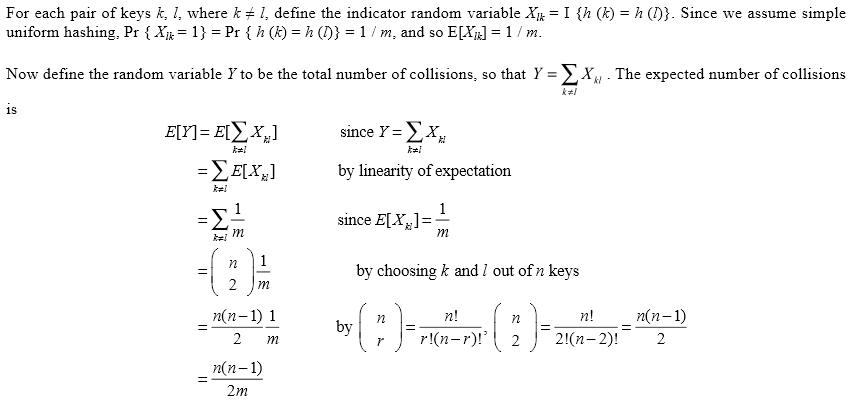

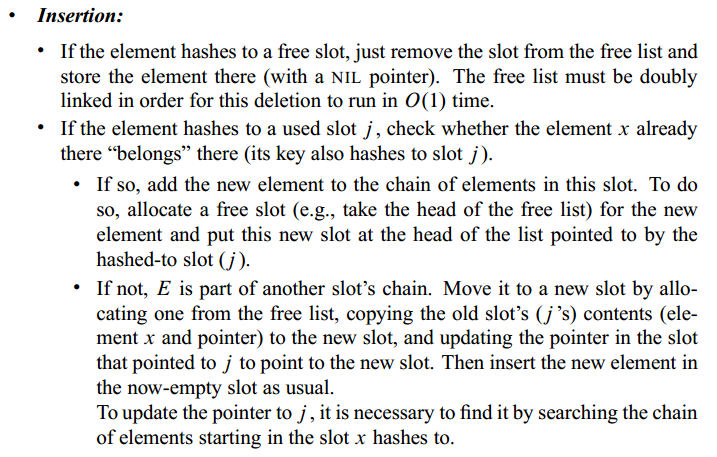
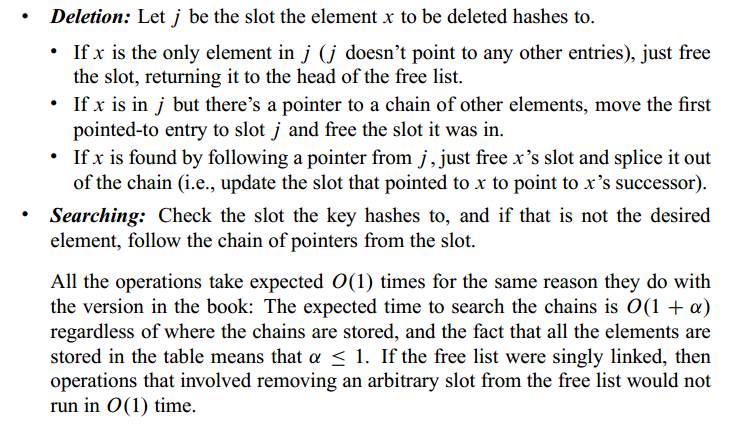
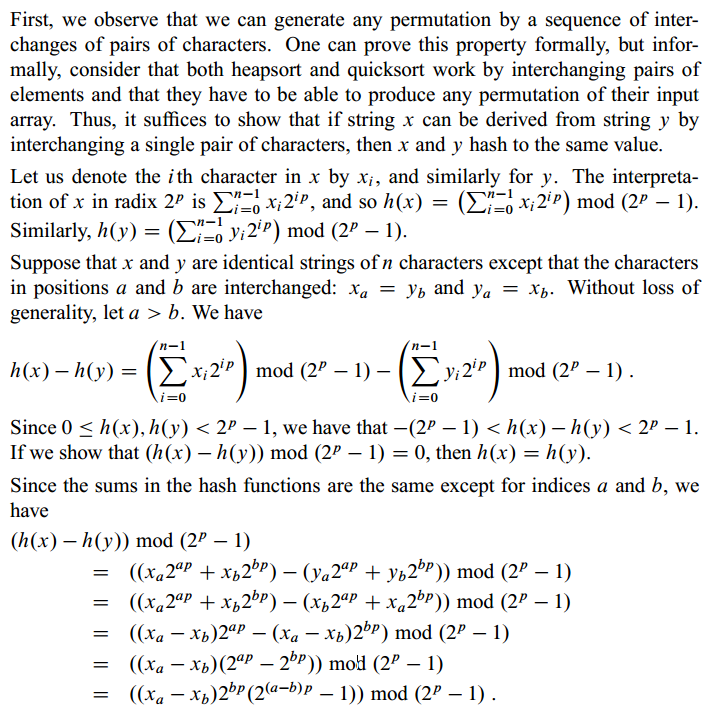
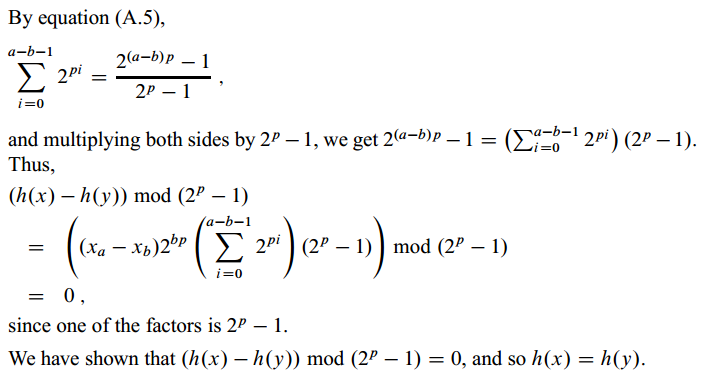
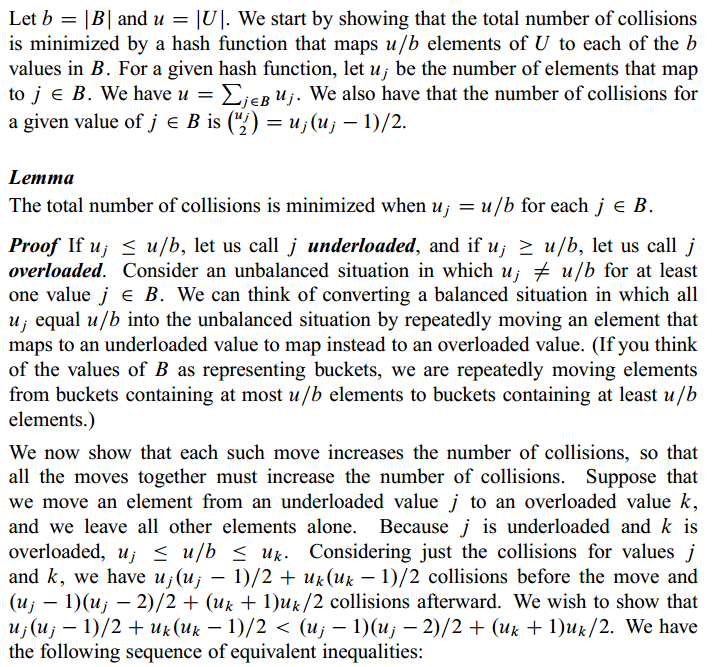
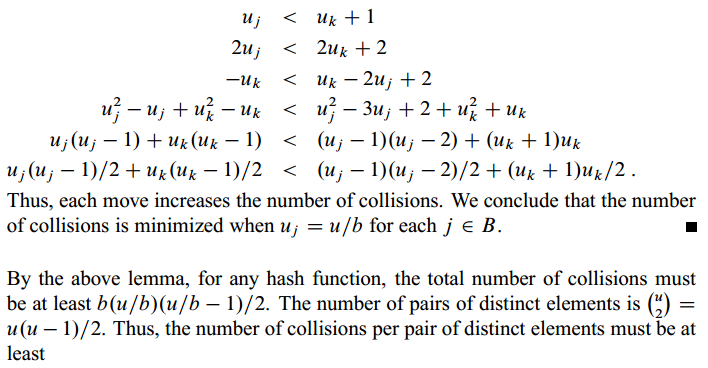
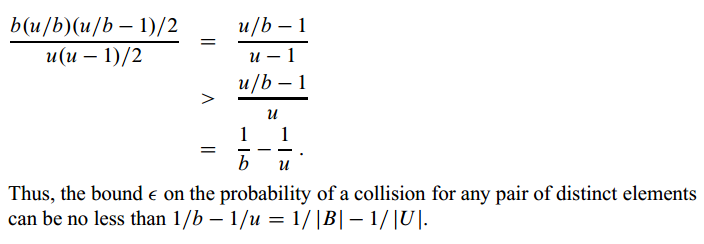














 7632
7632











 被折叠的 条评论
为什么被折叠?
被折叠的 条评论
为什么被折叠?








